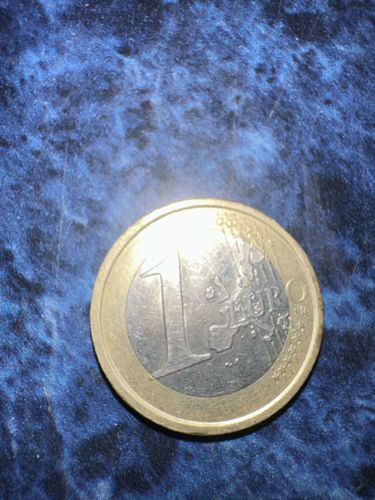1 Euro Coin
Country of Origin: Eurozone (e.g., France, Germany, Italy, Spain, etc.)
Year of Issue: Often 2002 (as the main image shows '2002' slightly visible, but can vary by issuing country and minting year)
Denomination: 1 Euro
Composition: Bi-metallic: Inner part is Nickel Brass (three layers: copper-nickel, nickel, copper-nickel); outer part is Copper-nickel (75% copper, 25% nickel)

Brief Description
The coin is bi-metallic with a golden-colored outer ring and a silver-colored inner circle. The obverse side (shown) typically features a common design for all Eurozone countries, which includes a large numeral '1', the word 'EURO', and a map of Europe (initially showing the 15 EU member states before 2004, and then all of Europe from 2007 onwards). The 12 stars of the European Union are also depicted around the edge.
Historical Significance
The 1 Euro coin, introduced on January 1, 2002, as part of the Euro currency launch, marked a significant step in European integration. It replaced various national currencies of participating countries, simplifying trade, travel, and financial transactions across the Eurozone. Its introduction symbolized a unified European economy and identity.
Estimated Value
Circulated 1 Euro coins typically hold their face value (€1). Uncirculated or proof versions, or those with rare minting errors or specific national designs, might fetch slightly higher prices (from €2 to €10+), but generally, they are not highly valuable collector's items due to their widespread circulation.
Care Instructions
To preserve the coin's condition, handle it by its edges to avoid transferring oils from your skin. Store it in a dry, cool environment, ideally in a non-PVC coin holder, album, or slab. Avoid cleaning the coin, as this can devalue it by scratching the surface or altering its original patina. If cleaning is absolutely necessary for identification, use distilled water and a soft cloth, but this is generally not recommended for valuable or collectible coins.
Created At: 2025-09-06T11:06:56.400100